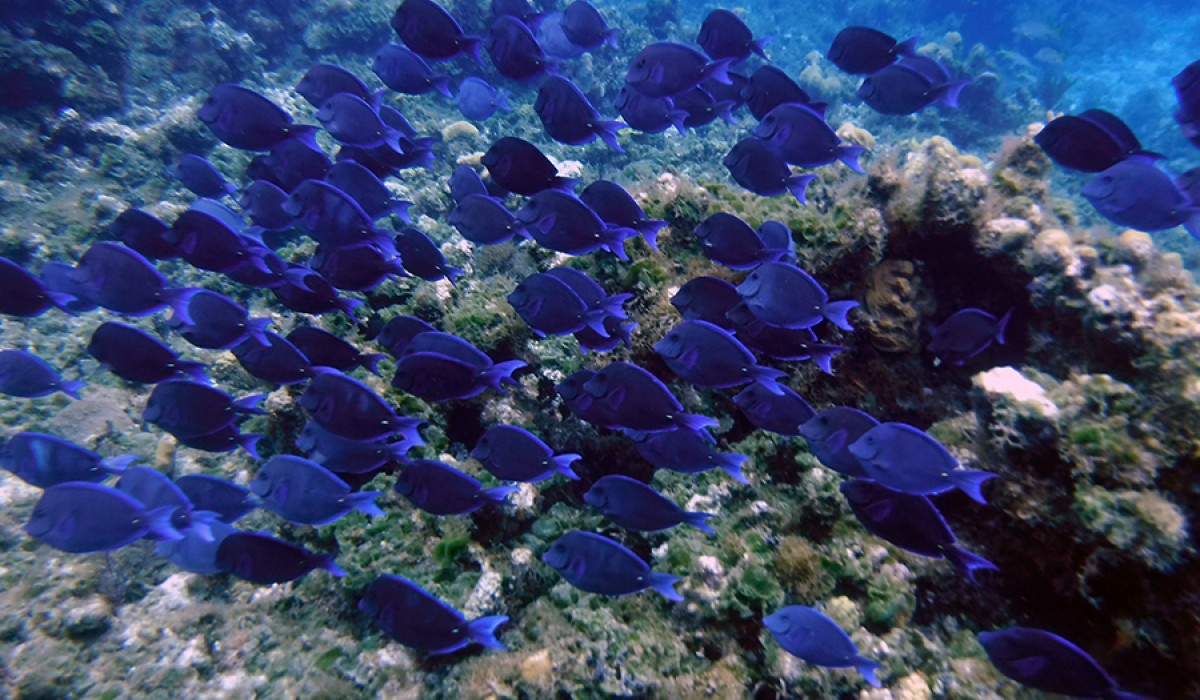Seventeen days down and only three left to go on our adventures here on San Salvador. After another yummy breakfast of French toast and sausage links, we had the mornings open to work on our group research projects. Many of us took the opportunity to begin working on our posters that we are going to present to the class and professors on Sunday night. We are getting a lot of final grades our last few days here; our professors spent the morning grading our organism posters we created as well as marking which organisms we need to know for our final.
This afternoon the blue tang research group headed out to Telephone Pole Reef to finish collecting their behavior analysis data while the other groups stayed back at the GRC to continue cranking out our projects. Some cool organisms that they saw included blue tangs (obviously) and a Caribbean Spiny Lobster, which they reported does not enjoy being messed with. While they were out researching, the other three groups set out on a search for computers that have Wi-Fi to find scholarly articles to cite in our posters. The scholarly articles are meant to enhance our knowledge on research that has been done before that pertains to our individual ideas and projects. The computer lab was pretty crowded because the other schools that are here are also coming to a close with their programs so they were working on final projects as well, but we all managed to fit.
This evening in class we learned about the final two organism groups, corals and anemones and fish. Some interesting facts we learned about Lionfish is that they an invasive species and they also have the ability to reproduce all year around and as frequently as every four days. It was another exciting and fact filled class!
As we progressed through this program, we have all gathered a better understanding for the world around us. The amount of knowledge, about both marine and terrestrial ecosystems, has changed all of our views on the world around us. We have a better appreciation for the ways everything interacts and their influences on the environment. As we watched the ways the fish, birds, and other organisms interacted both positively and negatively with each other, I think we have all been able to view our own actions towards the world and alter them to make more informative decisions that could impact our relationships with the environment.
Alyssa Ulrich ‘21
Emily Buckley ‘20
Michael Sherman ‘20




